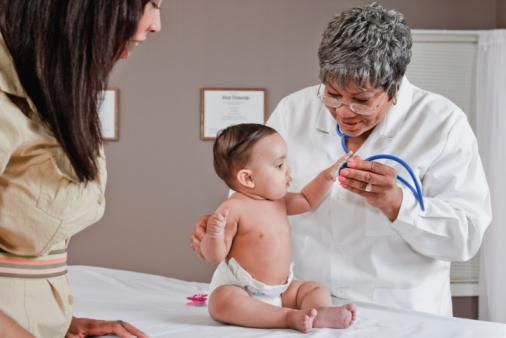This article / resource has been archived. We will no longer be updating it. For our most up-to-date information, please visit our vaccine information here.
This schedule is a suggested vaccination schedule for children. Talk with your health care professional for guidance.
| Vaccine | When | Why |
| Children age 0-6 years | ||
| Hepatitis B (HepB) | 1st dose at birth 2nd dose at 1-2 months 3rd dose at 6-18 months 4th dose (given no earlier than 24 weeks) may be permissible if a combination vaccine containing HepB is administered after the birth dose | Protects against the Hepatitis B virus, a serious disease that affects the liver. |
| Rotavirus | 1st dose given at 2 months 2nd dose given at 4 months 3rd dose given at 6 months | Protects against rotavirus, the most common cause of diarrhea in children. |
| Diphtheria, tetanus, pertussis (DTap) | 1st dose given at 2 months 2nd dose given at 4 months 3rd dose given at 6 months 4th dose given at 15-18 months 5th dose given at 4-6 years | Protects against diphtheria, a serious bacterial infection that usually affects the mucous membranes of the nose and throat; tetanus, a disease that affects the body's muscles and nerves; and pertussis (whooping cough), a highly contagious bacterial infection that causes uncontrollable, violent coughing. |
| Haemophilus influenzae type b | 1st dose given at 2 months 2nd dose given at 4 months 3rd dose given at 6 months 4th dose given at 12-15 months | Protects against haemophilus influenzae type b, a bacteria responsible for severe pneumonia, meningitis and other invasive diseases. |
| Pneumococcal vaccine (PCV) or pneumococcal polysaccharide vaccine (PPSV)* | 1st dose of PCV given at 2 months 2nd dose of PCV given at 4 months 3rd dose of PCV given at 6 months 4th dose of PCV given between 12 and 15 months PPSV dose given between 24 months and 6 years* | Protects against pneumococcal bacteria, which can cause pneumonia, bacteremia and meningitis. |
| Inactivated poliovirus | 1st dose given at 2 months 2nd dose given at 4 months 3rd dose given between 6 and 18 months 4th dose given between 4 and 6 years | Protects against the virus that causes polio, a highly infectious disease that invades the nervous system and can quickly lead to paralysis. |
| Influenza vaccine (seasonal) | Yearly dose recommended starting at 6 months | Helps protect against seasonal flu and 2009 H1N1 viruses. |
| Measles, mumps and rubella (MMR) | 1st dose given at 12-15 months 2nd dose given at 4-6 years | Protects against measles, a highly contagious virus that causes respiratory symptoms and a rash; mumps, a virus that causes swollen glands; and rubella (German measles), a virus that primarily affects the skin and lymph nodes. |
| Varicella (chicken pox) | 1st dose at 12-15 months 2nd dose at 4-6 years | Protects against varicella (chicken pox), a herpes virus that causes fever and skin lesions. |
| Hepatitis A (HepA) | Two doses at least 6 months apart at 12-23 months Children not vaccinated by age 2 can receive the vaccine at subsequent visits | Protects against hepatitis A, a virus that causes liver disease. |
| Meningococcal (MCV4)* | MCV4 is given to children aged 2 through 10 years with persistent comple¬ment component deficiency, anatomic or functional asplenia and certain other conditions placing them at high risk | Protects against a bacteria that can cause meningitis, an inflammation of the membranes that cover the brain and spinal cord. |
| Children age 7-18 years | ||
| Tetanus, diphtheria, pertussis (Tdap) | 1st dose at 11-12 years Catch-up immunization at 13-18 years | Protects against tetanus, a disease that affects the body's muscles and nerves; diphtheria, a serious bacterial infection that usually affects the mucous membranes of the nose and throat; and pertussis (whooping cough), a highly contagious bacterial infection that causes uncontrollable, violent coughing. |
| Human papillomavirus (HPV) | 1st dose for females at age 11-12 (minimum age for first dose is 9 years) 2nd dose 1-2 months after first dose 3rd dose 6 months after the first dose, at least 24 weeks after the first dose Series should be given to females at age 13 who haven't been previously vaccinated | Protects against human papillomavirus (HPV), a sexually transmitted infection that can lead to cervical cancer. |
| Meningococcal* | 1 dose given at 7-10 years in high risk groups 1 dose given at 11-12 years in children not in high risk groups Catch-up dose given at 13-18 years | Protects against a bacteria that can cause meningitis, an inflammation of the membranes that cover the brain and spinal cord. |
| Influenza | Given at 7-18 years in high-risk groups | Protects against pneumococcal bacteria, which can cause pneumonia, bacteremia and meningitis. |
| Hepatitis A (HepA)* | Series given at 7-18 years in high-risk groups | Protects against hepatitis A, a virus that causes liver disease. |
| Hepatitis B (HepB) | Catch-up series given at 7-18 years | Protects against the hepatitis B virus, a serious disease that affects the liver. |
| Inactivated poliovirus | Catch-up series given at 7-18 years | Protects against the virus that causes polio, a highly infectious disease that invades the nervous system and can quickly lead to paralysis. |
| Measles, mumps, rubella | Catch-up series given at 7-18 years | Protects against measles, a highly contagious virus that causes respiratory symptoms and a rash, mumps, a virus that causes swollen glands, and rubella (German measles), a virus that primarily affects the skin and lymph nodes. |
| Varicella (chicken pox) | Catch-up series given at 7-18 years | Protects against varicella (chicken pox), a herpes virus that causes fever and skin lesions. |
* Only given to children in certain high-risk groups


